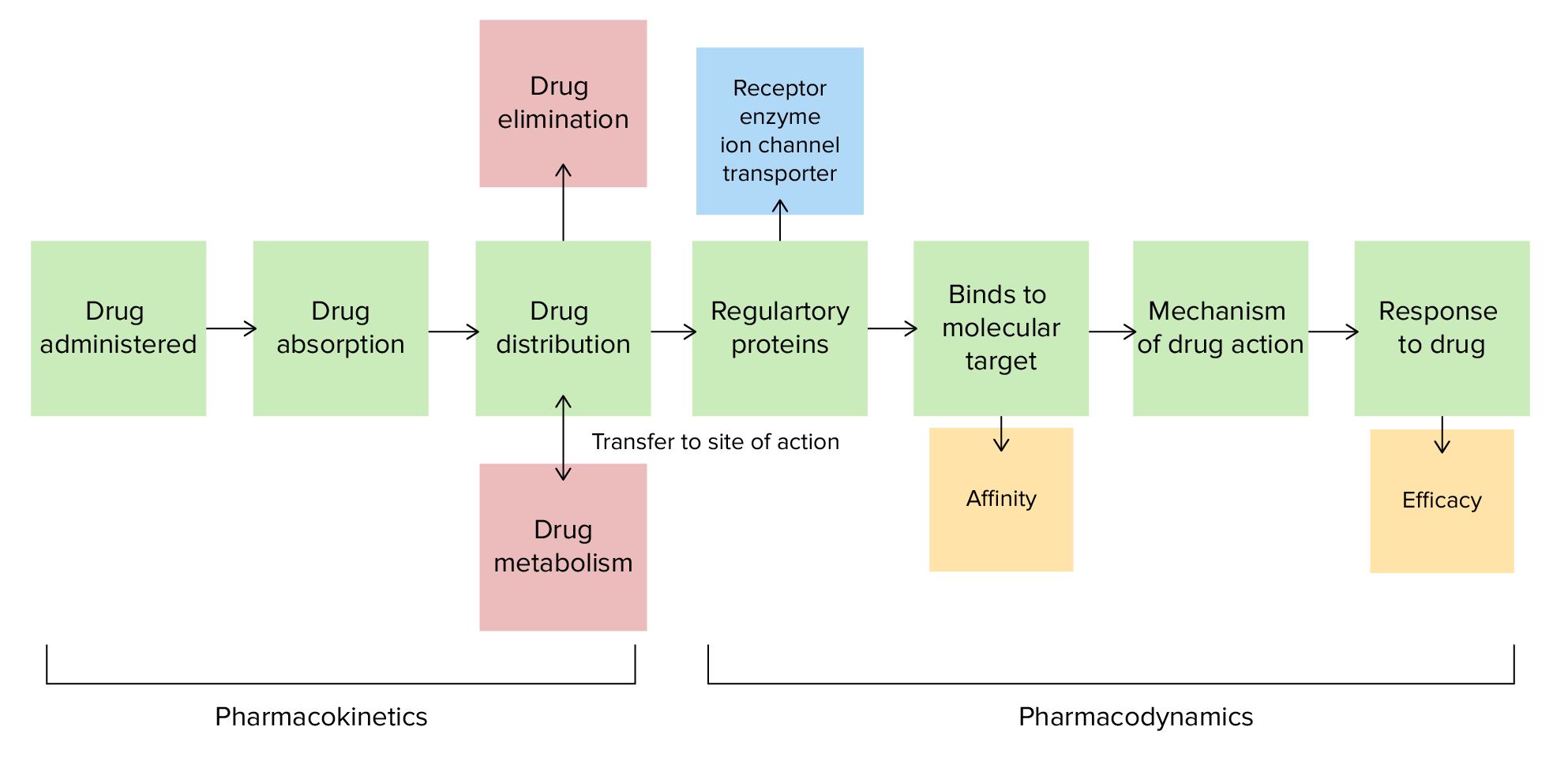Playlist
Show Playlist
Hide Playlist
Drug Receptors and Effectors – Pharmacodynamics
-
Slides Drug Receptors Effectors Pharmacodynamics.pdf
-
Reference List Pharmacology.pdf
-
Download Lecture Overview
00:01 Let's talk about the different kinds of receptors and effectors that are in our body. 00:06 The first most simple kind of receptor-effector combination is the steroid drug interaction. 00:12 So a steroid is a lipophilic kind of molecule. It will pass through the membrane because it is lipophilic, and the receptor is somewhere on the inside of the cell. 00:26 A transmembrane receptor is one in which that spans the entire membrane, and the surface has a port or a receptor site that binds a drug, and the activity is underneath and causes an effect within the cell. 00:42 Tyrosine kinase is a specific kind of receptor-effector system, where the extracellular domain binds to the ligand. 00:51 Upon binding, the intracellular tyrosine kinase domains are activated through phosphorylation of tyrosine residues on the receptor itself and on downstream signaling proteins. 01:04 This phosphorylation cascade triggers a variety of cellular responses, depending on the cell type and the specific receptor involved. 01:15 An ion channel is a very common type of receptor-effector combination, where a drug might bind to a site on the ion channel and cause a flow of something in or out of the cell. 01:28 And finally, you can have a G-protein coupled receptor. So a G-protein coupled receptor is where a drug binds to the receptor on one protein which causes a change in the G-protein to move over to another molecule to cause an effect. 01:47 So, let's give an example of a G-protein mediated event. So here's epinephrine, and it causes cyclic AMP synthesis within the cell. So the first step is that the drug epinephrine binds to the receptor and you can see the receptor is a transmembrane protein. 02:06 The receptor makes a change at the G-protein. And what happens is the G-protein itself dissociate and binds to an effector molecule, in this case, adenylyl cyclase. 02:20 The effector catalyzes a reaction which increases the concentration of cyclic AMP. 02:26 Cyclic AMP is the most common second messenger out there, and we call cyclic AMP a second messenger because it is now the second drug or second molecule that is going out to do something, the first being the drug. 02:40 Now, that cyclic AMP causes a biological effect. So in this particular case, we're talking about an increase in heart rate, or a dilation of skeletal muscles, or it could be a breakdown of glycogen to glucose, depending on what you're talking about.
About the Lecture
The lecture Drug Receptors and Effectors – Pharmacodynamics by Pravin Shukle, MD is from the course Pharmacokinetics and Pharmacodynamics.
Included Quiz Questions
Which receptor type typically functions using cAMP as a mediator?
- G-protein coupled receptor
- Ion channel
- Steroid receptor
- Tyrosine kinase receptor
- Transmembrane protein
Customer reviews
5,0 of 5 stars
| 5 Stars |
|
2 |
| 4 Stars |
|
0 |
| 3 Stars |
|
0 |
| 2 Stars |
|
0 |
| 1 Star |
|
0 |
I really love these course! Great work breaking it down and offering the quiz it really helps!
1 customer review without text
1 user review without text




